Even though the Championship is already decided, this weekend’s Old Firm Derby was exciting as always. This time though the excitement was purely caused by tactical measures the coaches had taken. In terms of intensity and fighting spirit, a drop off was obvious, which is also underlined by only two yellow cards each and twelve fouls committed each. In the end, Rangers were able to secure a 2-0 home win and send a message for the next season. Celtic, on the other hand, will surely analyse this defeat and improve for next year’s title fight. This tactical analysis will show the reasons for Rangers’ great win.
Line-ups
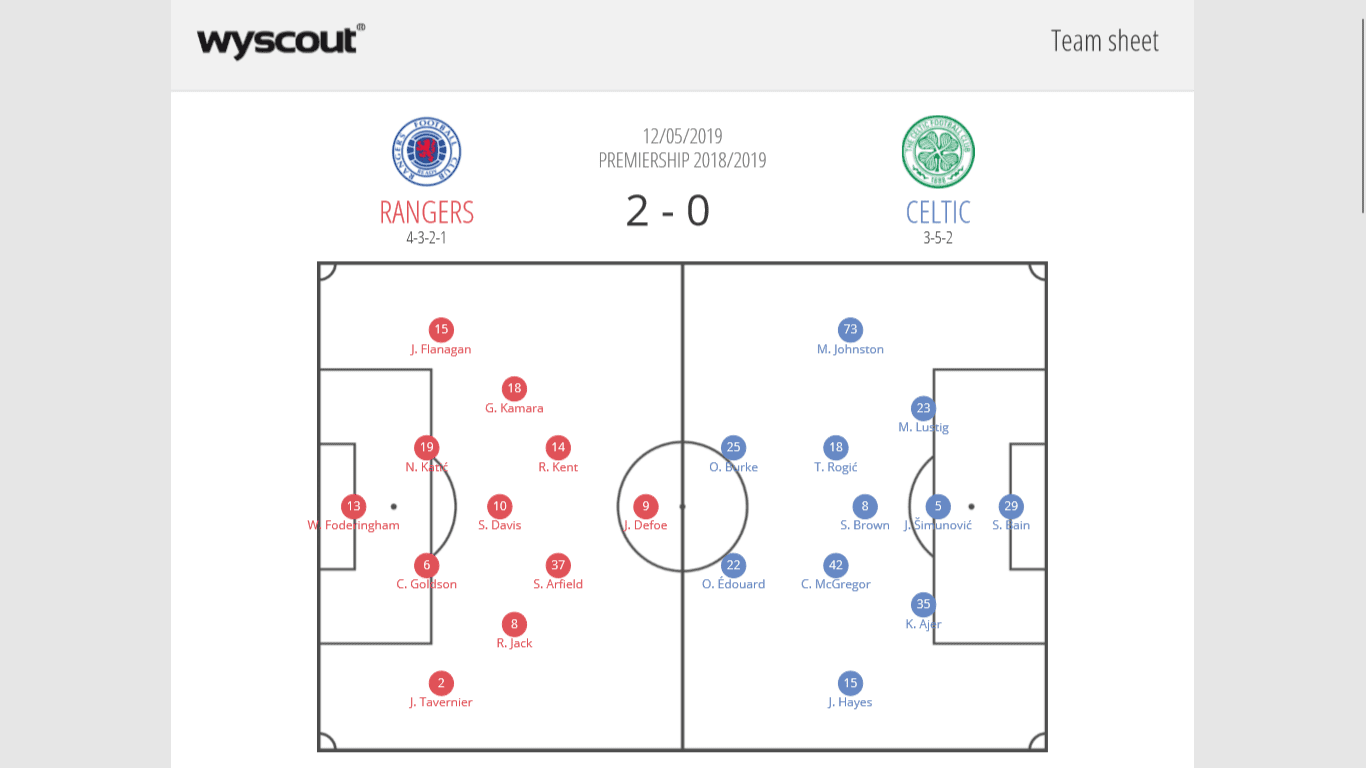
Rangers coach Steven Gerrard decided to use a 4-3-2-1 system, providing them a compact centre and a good structure to attack vertically. Celtic started in a 3-5-2, which they changed to a 4-2-3-1 with the beginning of the first half. Notice that Rangers are mirroring Celtic. Jermaine Defoe, Ryan Kent and Scott Arfield attack the back three. The full backs mark Celtic’s wingers, while the three central players match Celtic’s midfield. The idea of such an approach is to have an easier assignment so every player can concentrate on one opponent.
Rangers mirroring Celtic and close the centre
One example of this approach can be seen in the image below.
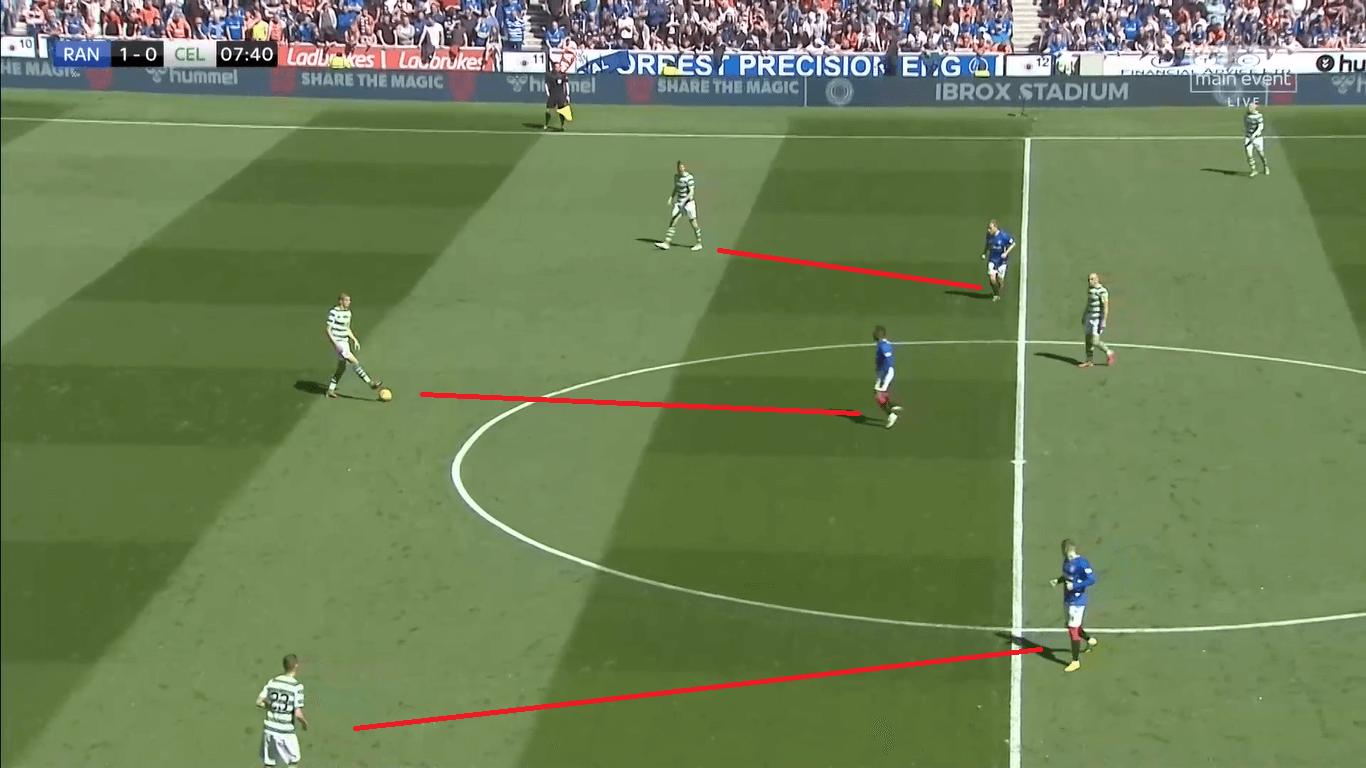
When Celtic were in the build-up, Rangers made it incredibly difficult for them to find passing lanes. Besides the mirroring aspect, where three players defend against three opponents, we also see that Rangers are preventing passes into the midfield with a slightly diagonal positioning compared to the opposed player.
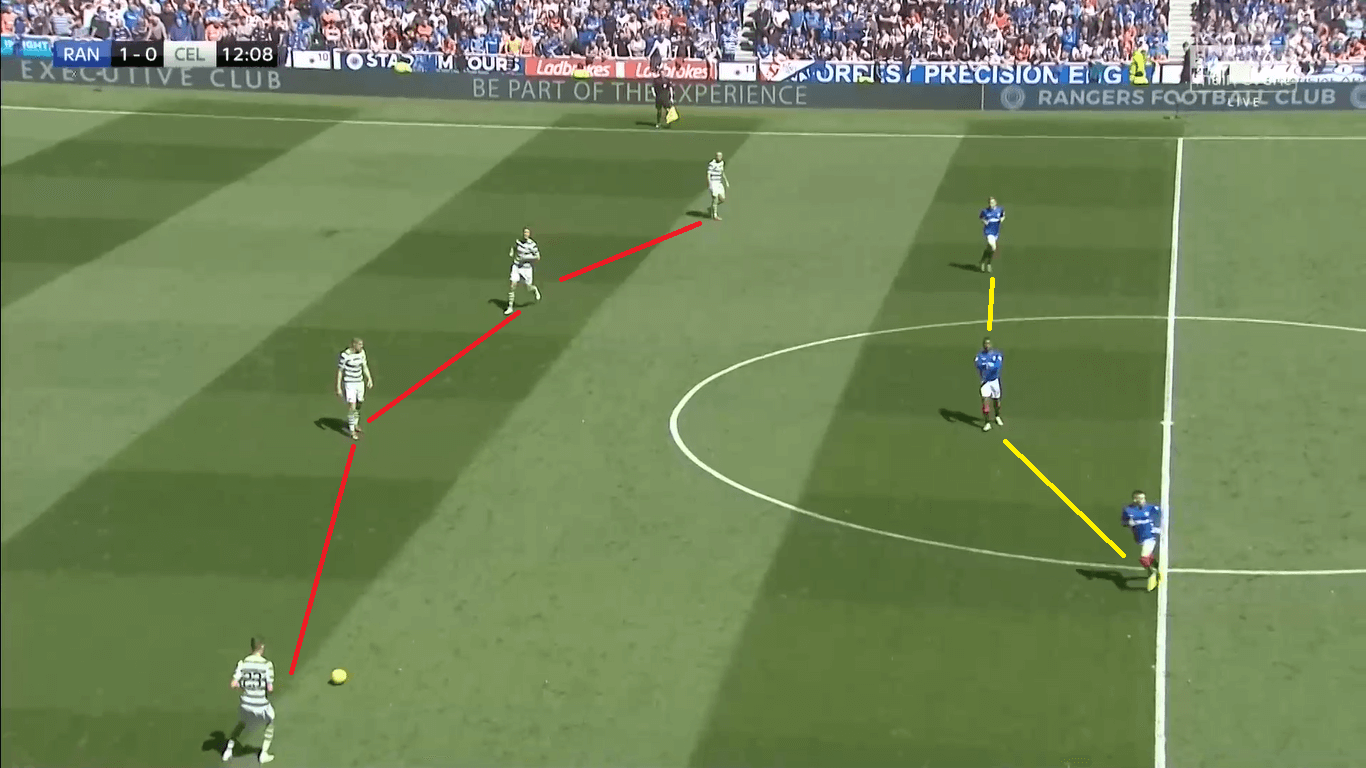
Early on, Celtic realised that they needed to adjust. As they rely on a good possession game, it was important that an additional player would fall back in order to have numerical superiority in the first build-up line. However, with Rangers also focusing on closing the centre and the passing lanes into it, it was still difficult to create something. Therefore, Celtic had a lot of unproductive possession, moving the ball within their back line without any sign of danger. Thus, the possession ratio of 57:43 in favour of Celtic doesn’t tell the whole story.
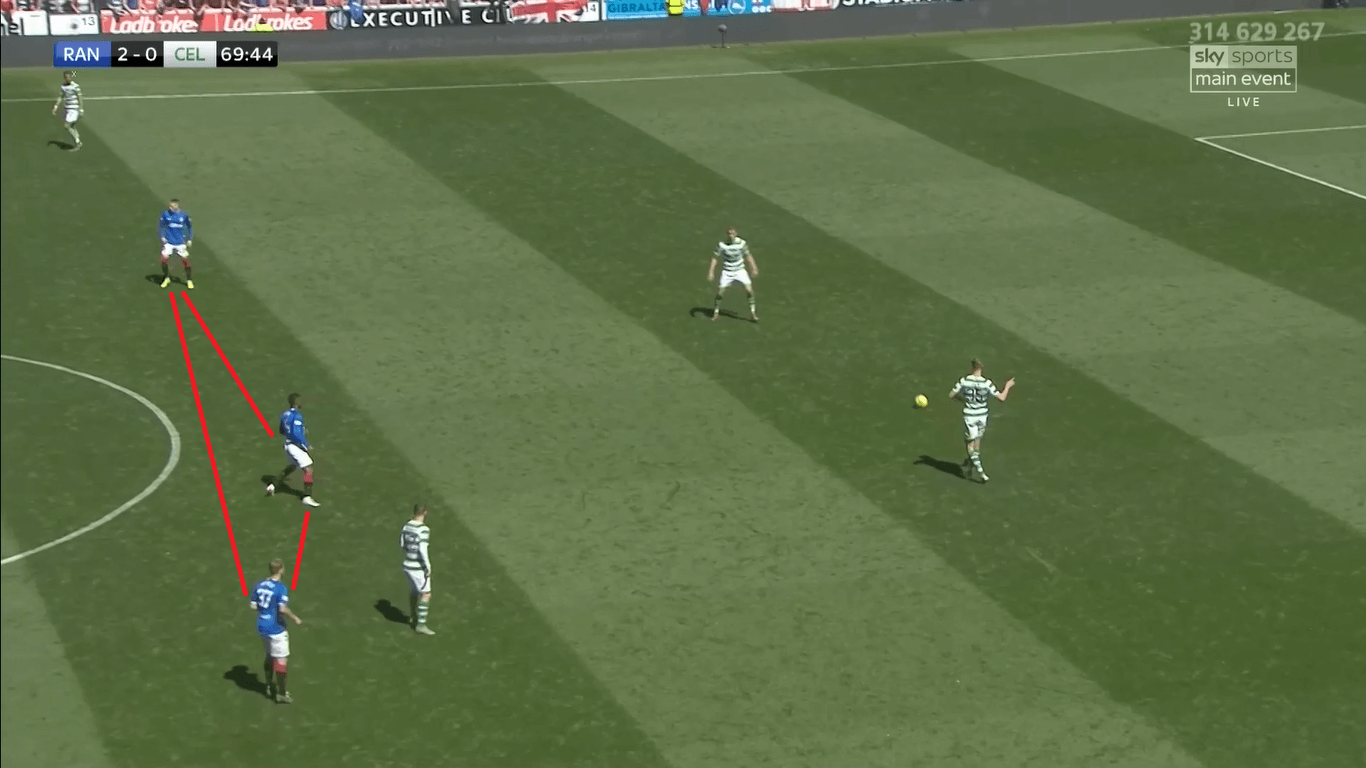
This image from the second half, where Celtic switched to a back four, underlines it as well. Rangers didn’t even react to the adjustment of Celtic, because things were perfectly fine for them no matter what the opposition did. In the second half, they wouldn’t even press, like in this image. Rangers players are more than ten meters away from the ball, but it’s enough for them, as they keep the centre closed. We also see that there is a passing option out to the wing. This seemed like the only way to go for Celtic, as long balls weren’t favourable for them.
Celtic weren’t able to use the wings
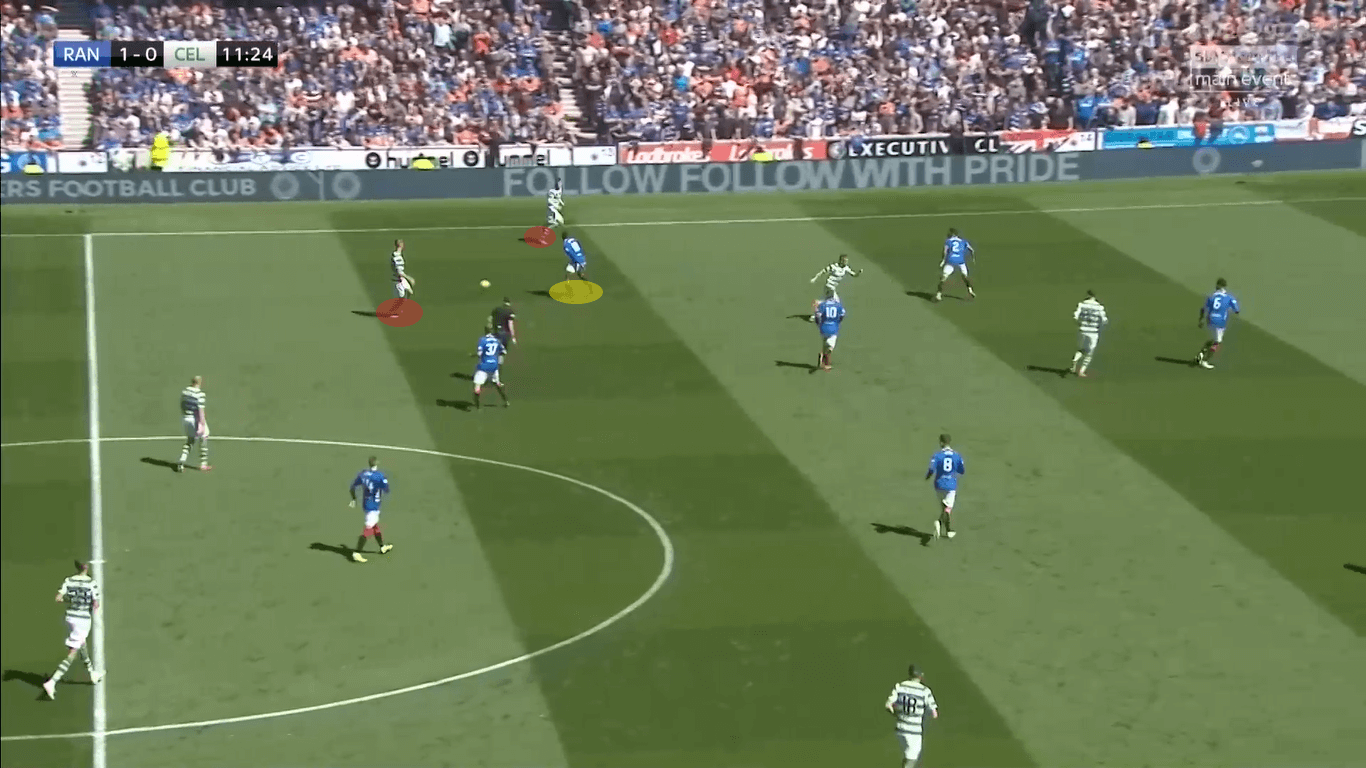
Here, left centre back Kristoffer Ajer dribbles with the ball and creates a two against one situation on the wing. This was a good idea, as this created some kind of chaos in the defence and could potentially open holes. After the pass to the wing, a long line pass would also be possible in order to create a strong attack. However, we also see that this is maybe the only good option, as Rangers defend strong by shifting to the wings.
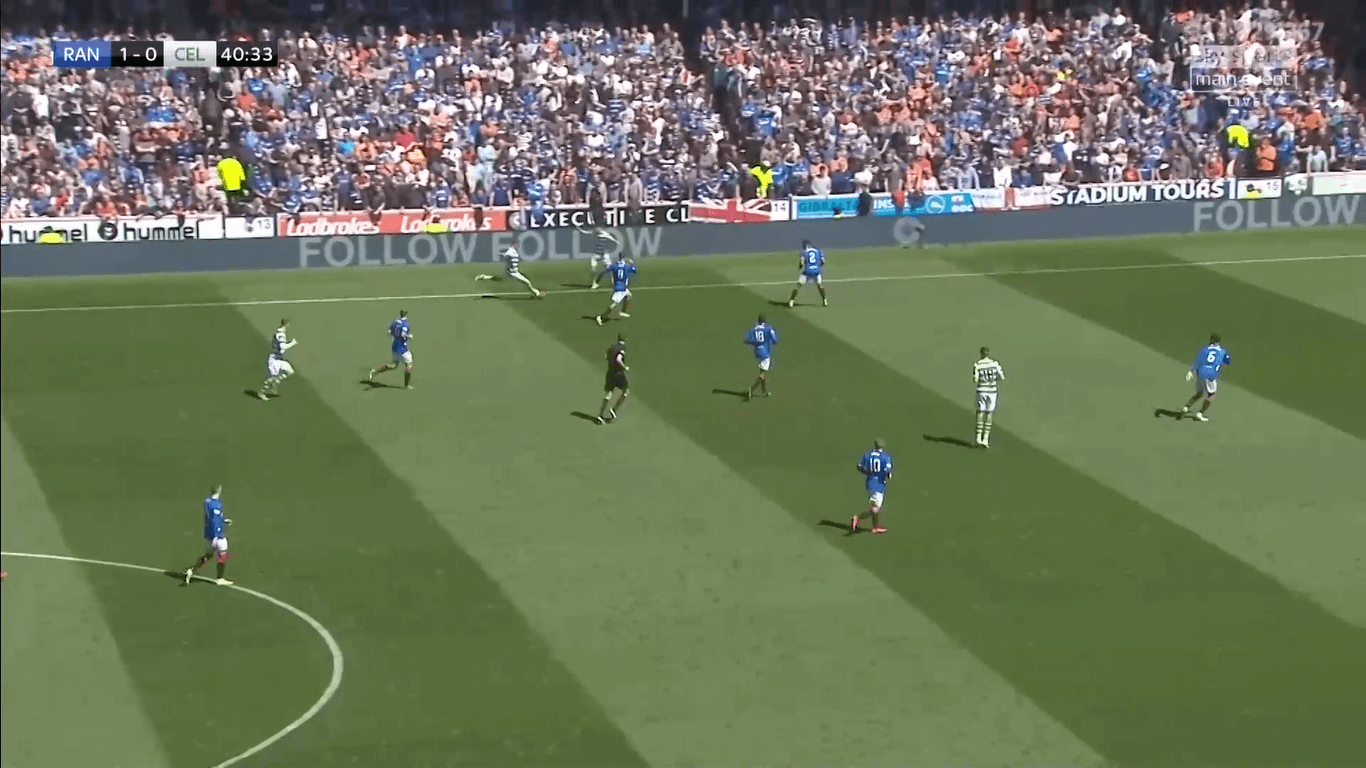
One great example of this can be seen here as well. In the whole image, we see four Celtic players against seven Rangers players. There is no passing option for Celtic that makes sense. So the cross seems like the only alternative. The cause for this is that Rangers moved a lot during the game and closed the ball-near wing perfectly, while Celtic failed to provide options due to a lack of movement.
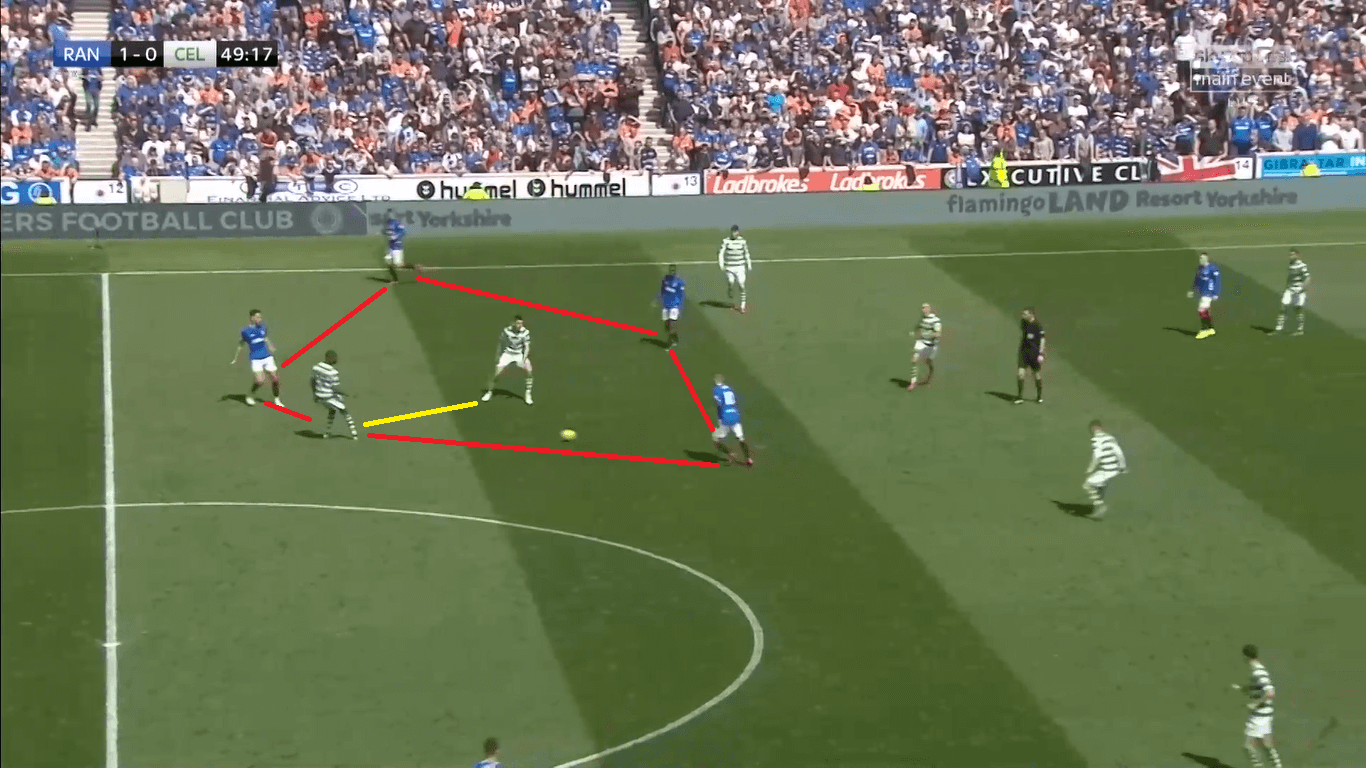
When Rangers had the ball on the wings, it was the other way round. Rangers would always have enough passing options to disentangle, while Celtic could barely force the opponent into a mistake there. Additionally, the midfield line of Celtic was too passive, like in the image above, where they wouldn’t move forward to pressure the opponent.
Rangers play vertically to create chances
Contrary to the patient approach by Celtic, Rangers were trying to play vertically whenever possible. Their structure was fitting for such an approach and they were able to execute this plan nicely.
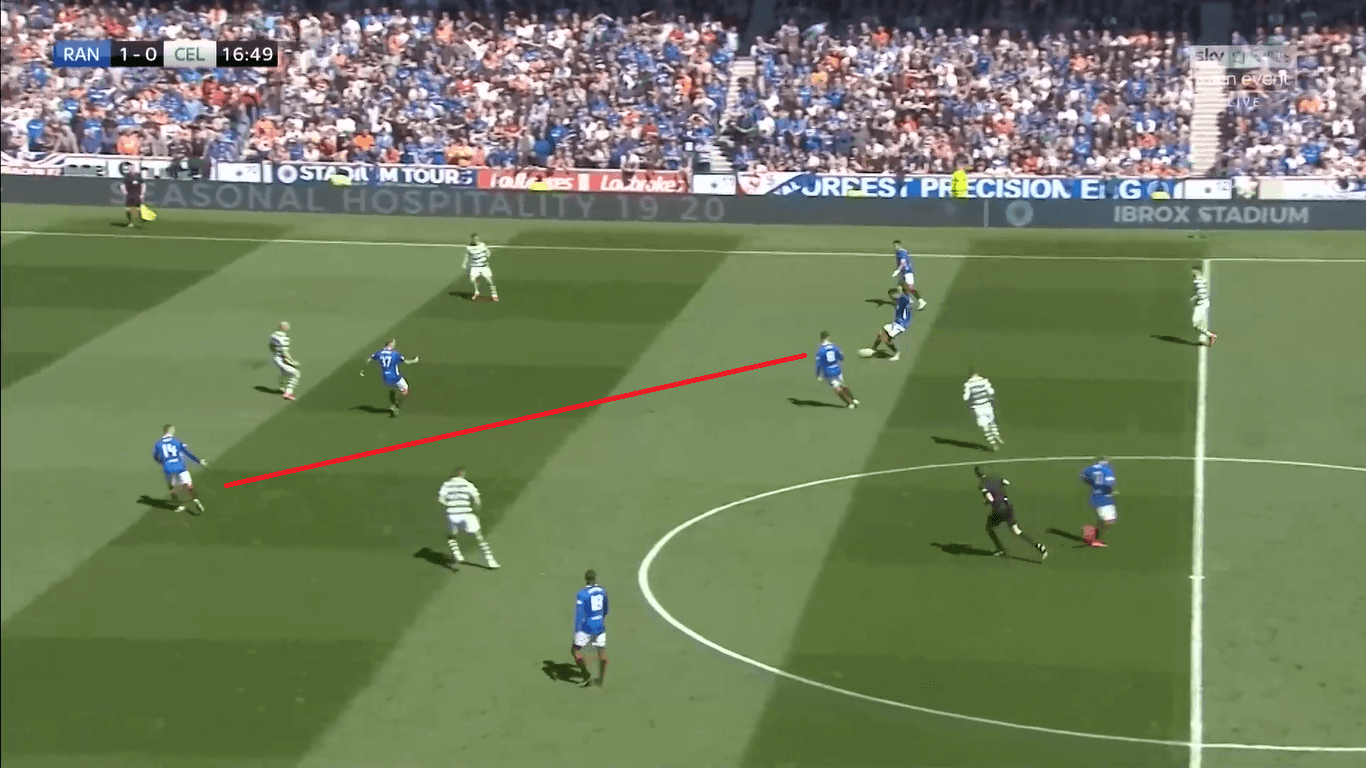
Here, we see an example of this. Rangers won the ball near the halfway line and immediately play the ball forward. Since this pass is even played diagonally, Kent can use his good body positioning to head directly towards the post. With Arfield right next to him, the continuation of the attack is rather dangerous.
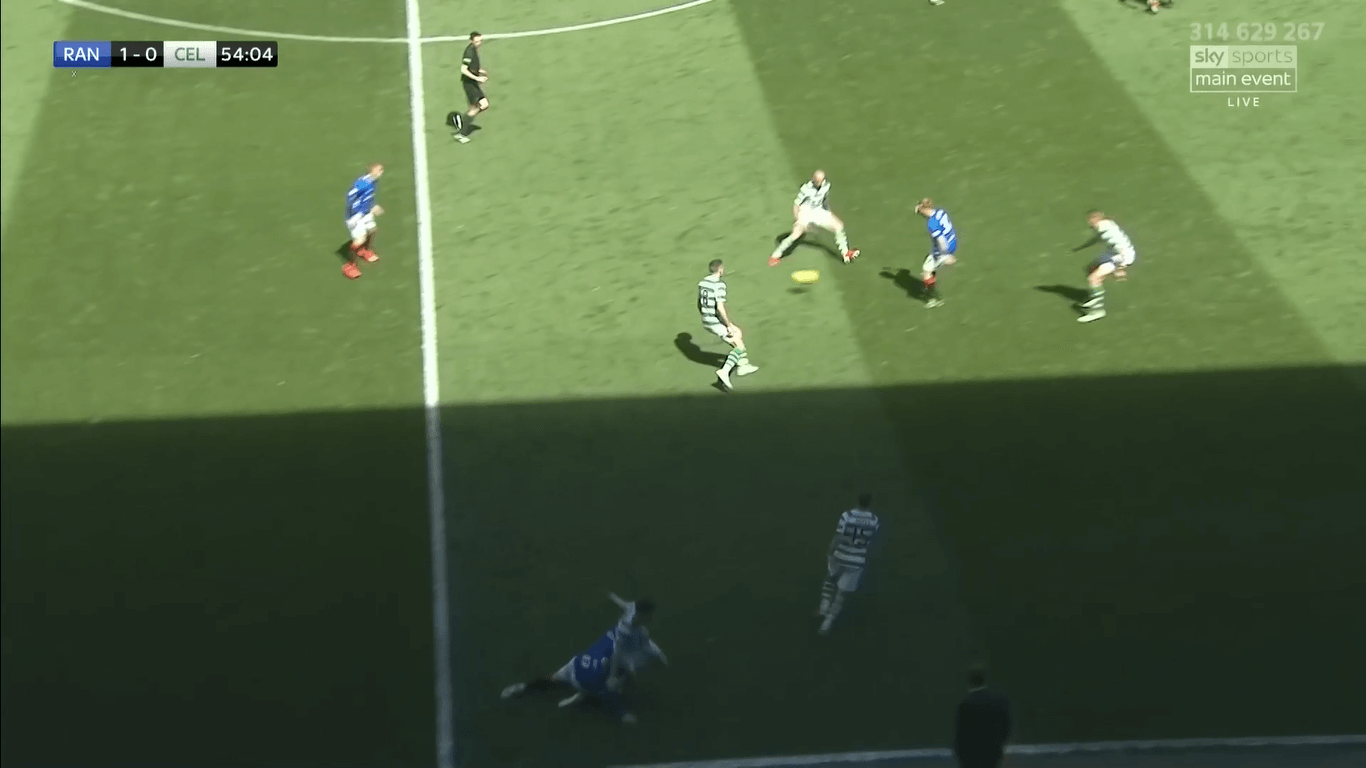
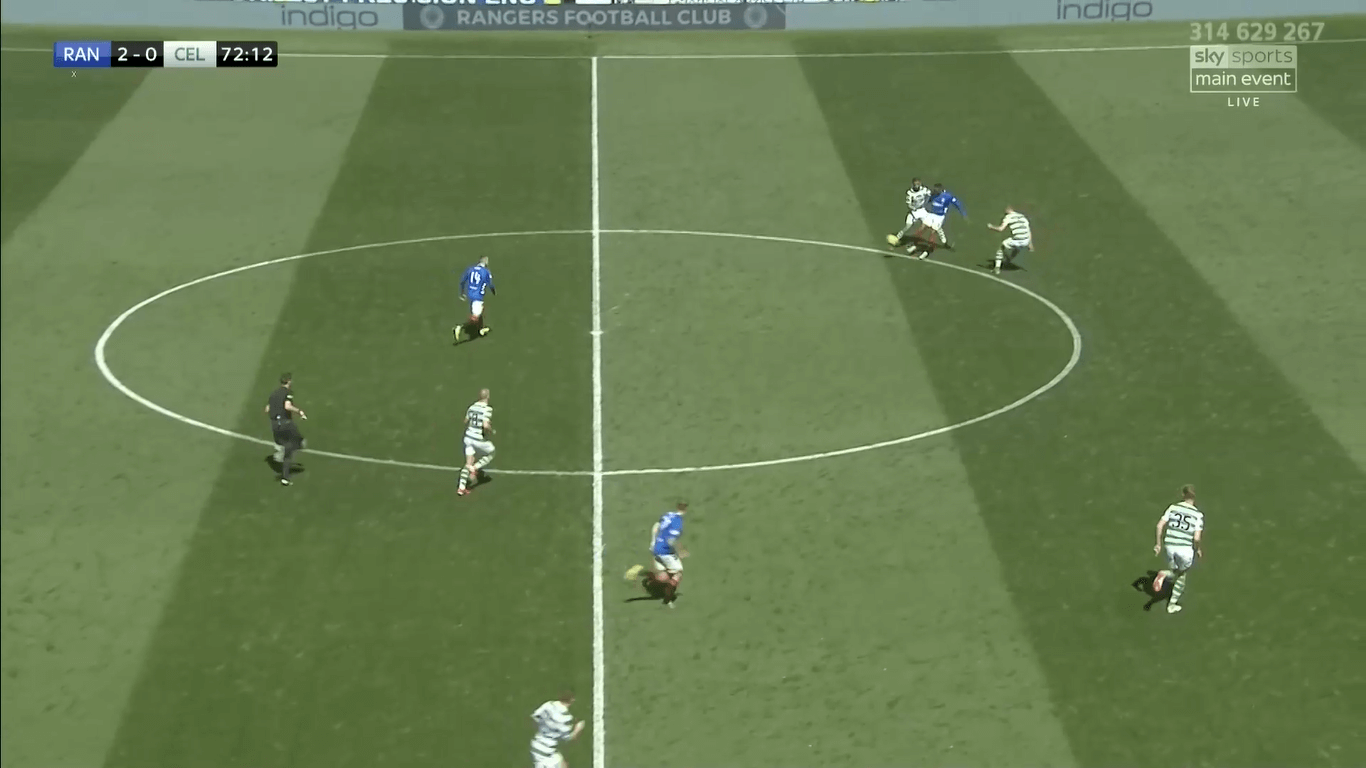
Mostly, they used lay-offs like in these situations. After a vertical pass, the player receiving the ball stands with his back towards the target. Most of the time, the best option in such a situation is to lay the ball off. Then the teammate can continue the attack thanks to his better sight and with a better assessment of the current situation on the field.
In the second image, when Defoe lays off to Kent, we see this clearly. Kent has so much space and time and a perfect position to assess the situation. He can then decide how to continue the attack, while Defoe makes a deep run after laying the ball off.
Some weaknesses in the possession game for Rangers
As good as the vertical game was, Rangers showed some weaknesses when it came to a slow possession build-up. They tried to minimize situations like these, but sometimes they occurred nonetheless.
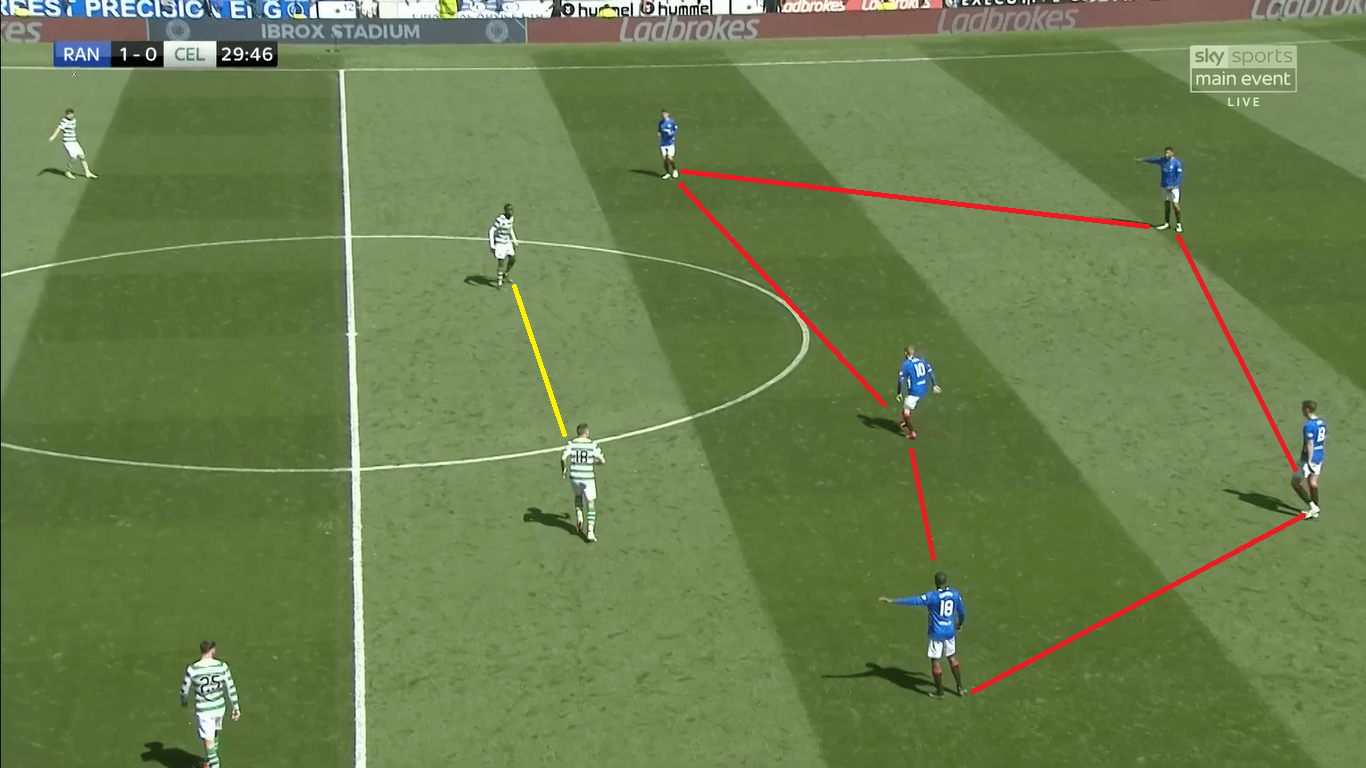
Here, we have an example where five Rangers players are involved in the build-up. While you could play a five against two, it doesn’t seem to make sense to have all the five players nearer to the own post than the two opponent defenders. As the plan should be to move the ball forward, the space near the halfway line should be occupied. The structure with the inverted fullbacks is seemingly a modern approach popularized by Pep Guardiola’s Manchester City. But in this situation, it just doesn’t work, because there is no need for such positioning. Guardiola uses this to open lanes for his wingers to find one on one situations. That’s not the case here.
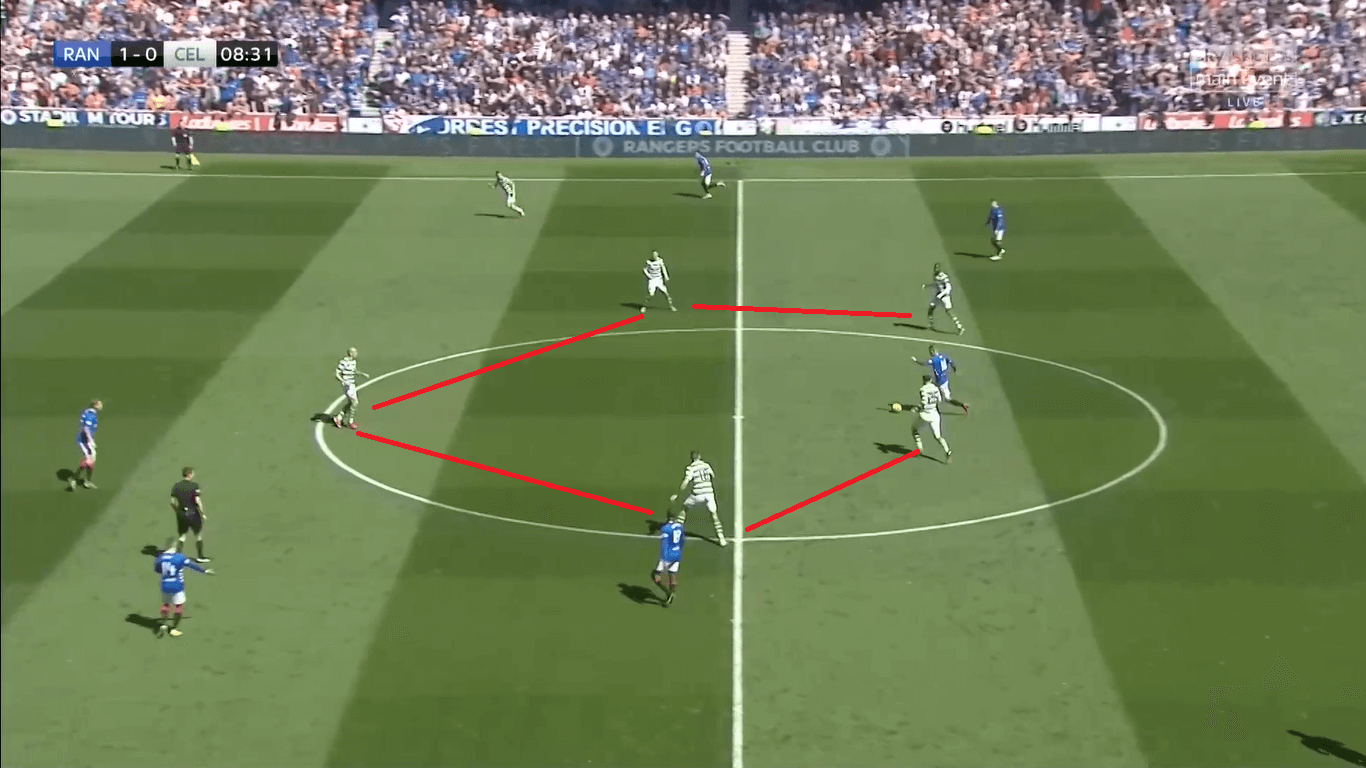
Also, we saw Rangers players being trapped by the Celtic defence. Here, we have a great example of such a situation. Celtic seemingly offer the centre, and Steven Davis dribbles into that space. However, with five players in the centre, Celtic then tighten the space for Davis and eventually win the ball. We still see that Davis has some passing options, so it’s not a perfect trap. Probably, this approach wouldn’t work against calibre like Barcelona or Real Madrid, but in this situation, it’s sufficient to provoke a turnover. It’s not entirely clear whether Rangers couldn’t realize that there are such traps, or they willingly tried to create something there nonetheless. But we can state that they couldn’t react to this and didn’t find a solution.
Conclusion
In the end, Rangers won this game thanks to an early goal from a free kick just after two minutes and another successful attack in the second half. Rangers were well prepared for this game and wanted to make their home crowd a nice present in the form of a derby win. Celtic lacked ambition and willingness to win this game, which is understandable as they have already won the championship. Nevertheless, this game can be interpreted as a signal from Rangers, saying that they want to attack next season.
If you love tactical analysis, then you’ll love the digital magazines from totalfootballanalysis.com – a guaranteed 100+ pages of pure tactical analysis covering topics from the Premier League, Serie A, La Liga, Bundesliga and many, many more. Buy your copy of the May issue for just ₤4.99 here, or even better sign up for a ₤50 annual membership (12 monthly issues plus the annual review) right here.

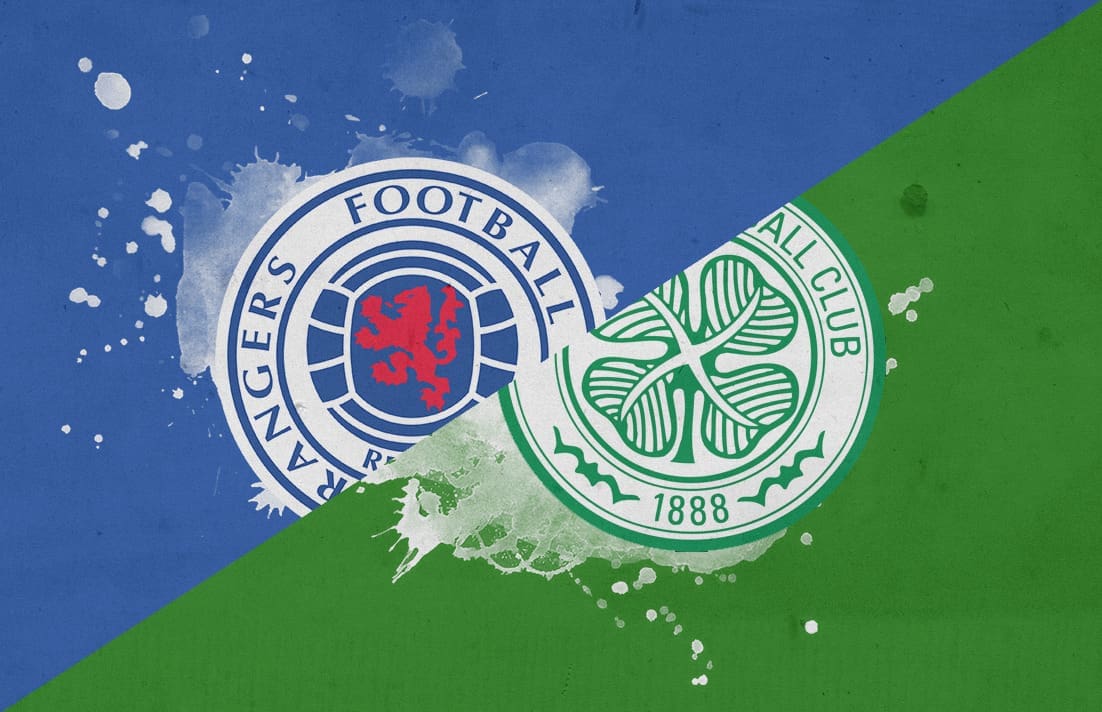


Comments